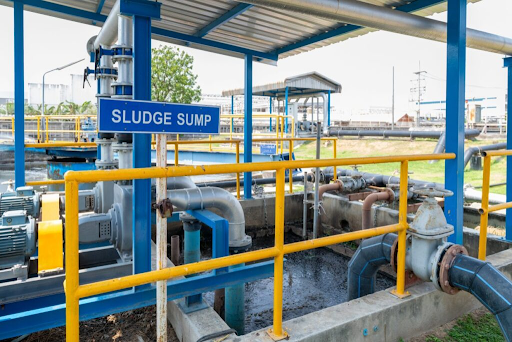Industrial Pumping in Harsh Winter Conditions: Challenges and Proven Solutions
varsha August 7, 2025 0 COMMENTS
Industrial facilities that rely on fluid transfer systems often face their toughest operational test during the coldest months of the year. When temperatures plunge below freezing, industrial pumping becomes a complex task, as equipment performance, fluid properties, and system integrity are all put at risk. From freeze damage to performance degradation, winter conditions demand a proactive approach to maintain reliable industrial pumping operations.
This comprehensive guide explores the challenges of industrial pumping in winter, outlines proven cold weather solutions, and provides maintenance strategies to ensure system reliability in extreme conditions.
Table of Contents
Understanding Industrial Pumping in Cold Climates
Operating industrial pumping systems in cold regions or during seasonal freezes introduces unique operational risks that can impact uptime and safety.
Why Industrial Pumping is Critical for Winter Operations
Across industries such as oil and gas, chemical processing, power generation, and municipal water management, uninterrupted pumping is essential. Winter conditions can threaten:
- Process continuity – Essential fluids like water, oil, or chemicals must flow consistently to avoid operational shutdowns.
- Equipment longevity – Pumps exposed to freezing temperatures risk seal damage, bearing stress, and cavitation.
- Worker and environmental safety – Leaks caused by frozen pipes or seals can create hazardous conditions.
Common Industrial Pump Applications Affected by Cold Weather
Some industrial operations are especially vulnerable to cold-weather pump performance issues:
- Municipal water and wastewater treatment – Pipes and pumps in exposed locations face freezing risks.
- Oil and gas operations – Crude oil viscosity increases in winter, straining pump systems.
- Mining and construction dewatering – Temporary pump setups are prone to freeze-ups.
- Chemical plants – Precise pumping is required to maintain process quality; any slowdown risks product loss.
Key Industrial Pump Challenges in Freezing Conditions
Even robust industrial pumps are susceptible to winter stress. Below are the most common industrial pump challenges in freezing conditions.
Reduced Pump Performance in Winter
When temperatures drop:
- Fluid viscosity increases, making pumping less efficient.
- Cavitation risks rise, especially in suction lines.
- Motor loads spike, potentially causing overcurrent trips.
Freeze Damage and Ice Formation in Pump Components
Standing water or slow-moving fluids can freeze within pump housings, leading to:
- Cracked casings or impellers.
- Burst suction or discharge piping.
- Damage to seals, bearings, and valves.
Mechanical Stress and Seal Failures in Extreme Cold
Mechanical seals are particularly vulnerable during cold snaps. Materials contract in low temperatures, which can result in:
- Leakage around seals or flanges.
- Seized bearings due to improper lubrication.
- Emergency shutdowns that halt production.
Proven Cold Weather Pumping Solutions
Mitigating these risks requires a proactive plan, which may include having access to emergency heating services to ensure operations continue smoothly during extreme cold. Below are proven cold weather pumping solutions used by industrial operators worldwide.
Winterizing Industrial Pumps Effectively
Winterizing industrial pumps involves preparation steps that prevent fluid from freezing and damaging system components:
- Drain non-operational pumps completely to avoid trapped water.
- Fill active systems with antifreeze solutions if applicable to the process.
- Cover exposed equipment with insulated enclosures or heated shelters.
Insulation and Heating Solutions for Freeze Protection
Protecting industrial pumps in winter often requires combining insulation with heat:
- Pump housing insulation – Prevents rapid heat loss.
- Trace heating – Electric heat tape applied to suction and discharge lines.
- Heated pump shelters or cabinets – Maintain a stable microclimate for pumps in remote locations.
Recommended Lubrication and Fluids for Cold Conditions
Fluid properties change in freezing weather, affecting both pumped media and lubricants:
- Use low-temperature grease or oil to reduce friction and prevent bearing seizure.
- Verify that process fluids remain pumpable in sub-zero conditions.
- Schedule regular fluid checks to prevent unexpected system shutdowns.
Remote Monitoring and Predictive Maintenance
Modern cold climate industrial pumping solutions leverage IoT-based monitoring:
- Temperature sensors alert operators to freezing risks.
- Flow and vibration monitoring detects performance drops early.
- Predictive maintenance tools forecast seal or bearing failures before catastrophic damage occurs.
Winter Pump Maintenance Best Practices
Preventive maintenance is the backbone of reliable winter pump operation.
Pre-Winter Inspection and Testing Protocols
Conducting a thorough inspection before freezing conditions arrive includes:
- Checking alignment and coupling integrity.
- Inspecting seals, gaskets, and lubrication points.
- Testing backup power and heat tracing systems.
Emergency Response and Contingency Plans
Unplanned freeze events can still occur, so facilities should prepare:
- Emergency drainage plans to quickly remove standing water.
- Spare pump and seal inventory for rapid replacements.
- Hot water or steam thawing protocols for frozen lines.
Documentation and Ongoing Performance Tracking
A winter maintenance log ensures that all checks are completed and issues are addressed promptly:
| Task | Frequency | Responsible Party |
| Inspect pump insulation | Weekly | Maintenance Lead |
| Verify heat tracing operation | Daily | Electrical Team |
| Lubricate bearings | Bi-weekly | Mechanical Team |
| Monitor flow and pressure logs | Continuous | Operations Team |
Building Reliable Industrial Pumping Systems for Winter
Long-term reliability requires designing for winter rather than reacting to it.
Selecting Cold Climate Industrial Pumping Solutions
Choose pumps rated for low-temperature operation, including:
- Stainless steel or ductile iron materials for durability.
- Seal designs are compatible with cold-weather contraction.
- Motors with cold-start capability.
Design Considerations for Extreme Weather Pump Operation
Industrial engineers should implement:
- Short suction lines to minimize freeze exposure.
- Sloped piping to encourage natural drainage.
- Redundant pumps for critical operations.
Partnering with Manufacturers for Customized Solutions
Manufacturers can provide:
- Factory-installed heat tracing and insulation kits.
- Remote monitoring packages for predictive maintenance.
- Tailored material selection for specific temperature ranges.
Conclusion and Actionable Recommendations
Operating industrial pumping systems in harsh winter conditions is challenging but manageable with the right strategy. Key takeaways include:
- Identify vulnerable pumps and winterize them before freezing temperatures arrive.
- Use insulation, heating, and low-temperature lubricants to prevent freeze damage.
- Adopt remote monitoring and predictive maintenance to stay ahead of potential failures.
By combining proper design, maintenance, and monitoring, facilities can ensure reliable industrial pumping systems and avoid costly winter downtime.
RELATED ARTICLES
Latest Articles
 Jagermeister 750ml Price in India: Full …In Whisky Prices
Jagermeister 750ml Price in India: Full …In Whisky Prices Building a Scalable Payment Infrastructu…In Technology
Building a Scalable Payment Infrastructu…In Technology Tech-Savvy Ways to Streamline Your Finan…In Business
Tech-Savvy Ways to Streamline Your Finan…In Business Magic Moments Vodka Price in India: Size…In General
Magic Moments Vodka Price in India: Size…In General The Role of Claims Agencies in Holding A…In Tips
The Role of Claims Agencies in Holding A…In Tips How Embracing Cloud‑Native Strategies Tr…In Technology
How Embracing Cloud‑Native Strategies Tr…In Technology Poorvika Mobiles Pun: Best Place for You…In Technology
Poorvika Mobiles Pun: Best Place for You…In Technology Why Choosing the Right NEET Coaching Mak…In Education
Why Choosing the Right NEET Coaching Mak…In Education
stopie.com is a participant in the Amazon Services LLC Associates Program, an affiliate advertising program designed to provide a means for sites to earn advertising fees by advertising and linking to Amazon.com.
Clicking on an Amazon link from stopie.com does not increase the cost of any item you purchase.
We will only ever link to Amazon products that we think our visitors may be interested in and appreciate learning more about.



